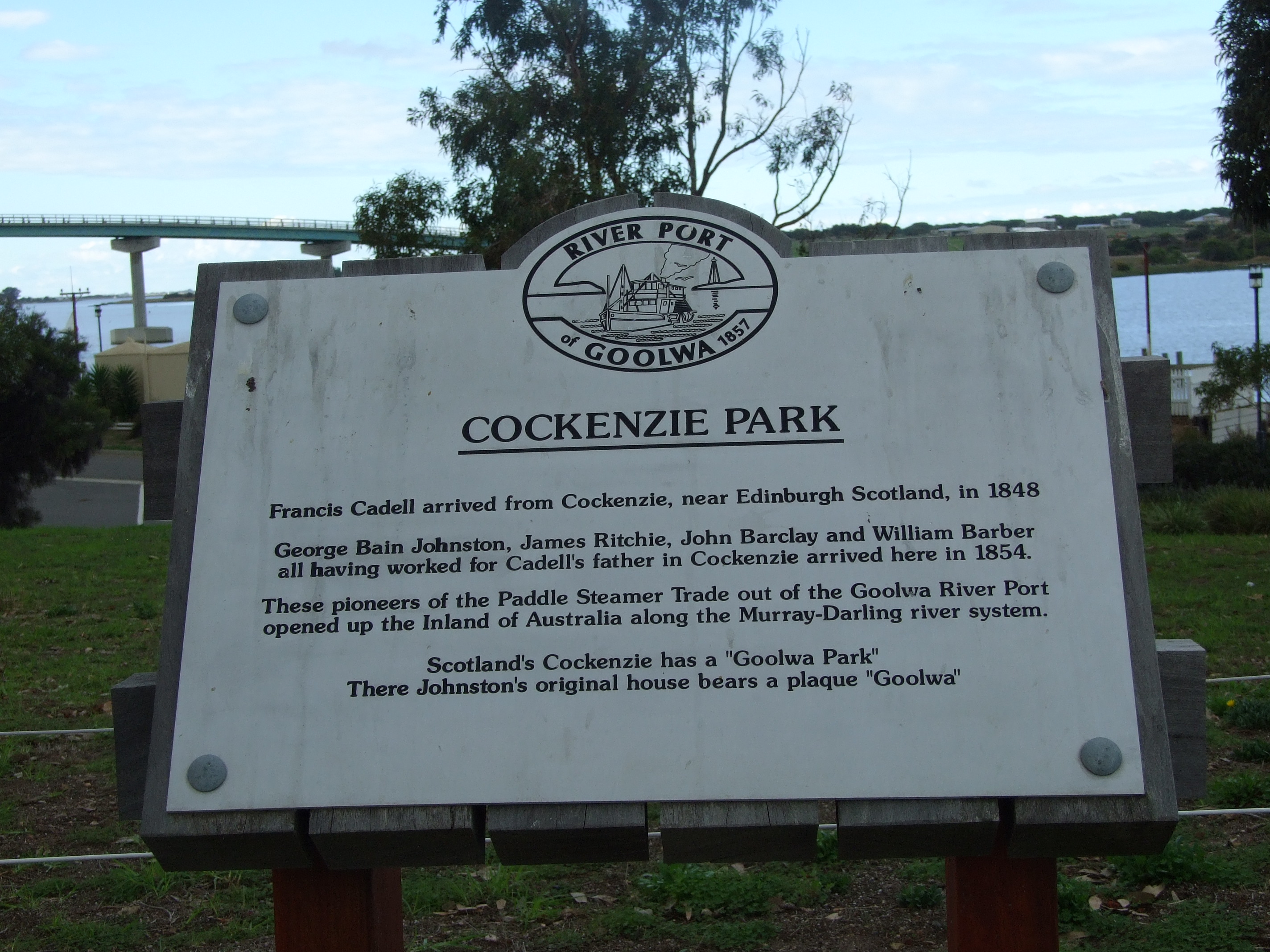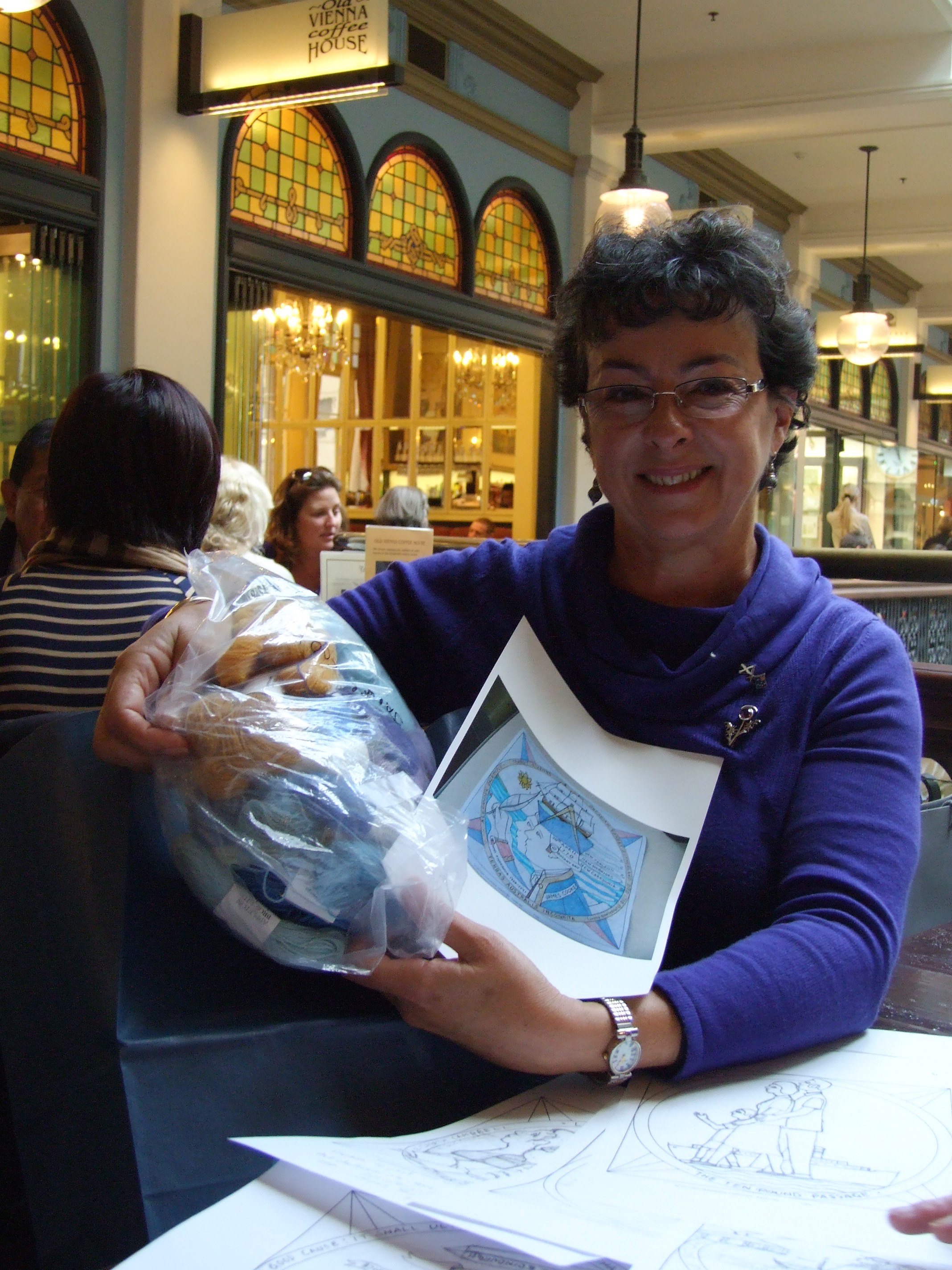After their visit to Beijing, our team then headed over to Australia. Yvonne Murphy continues the account:
From China we flew south to Perth, Western Australia, where we travelled by train out to the suburb of Bayswater to the base of the Western Australian Genealogical Society (WAGS). The Scottish Special Interest Group (SSIG) is part of WAGS and we met with Margaret Pike to have a chat about the project. She has a contact in the Western Australian Embroidery Group so we hope to recruit stitchers that way and she will report back to the SSIG with copies of the sketches and information she received from us.
A meeting with Ken Suttie Immediate Past Chieftain of the St Andrew’s Society of Western Australia, wasn’t possible at the time, but we made contact by telephone and Margaret Pike will update him.

Rosemary Farmer was one of the talented stitchers who worked on a panel for the Battle of Prestonpans Tapestry and she is a keen volunteer stitcher for a diaspora panel. She lives in Sydney, New South Wales, and she will coordinate the group of stitchers already formed. She was thrilled to see the sketches that Andrew has designed for Australia, particularly for the panel on gold mining in Bendigo. as it was her ancestors who were out there following the gold rushes.
Helen Johnson (above), one of the members of the stitching group in Sydney, was there as well, and is now the proud possessor of linen, wool and the design for the Botany Bay panel. Captain James Cook first landed at Kurnell, on the southern banks of Botany Bay, on Saturday 29 April 1770, when navigating his way around Australia. A second completed panel on the Ballarat goldfield was given to Rosemary to hand out to another member of the group. From there, we all made our way to have lunch on the banks of Sydney Harbour with a view of Sydney Opera House. We were joined by representatives from the Scottish Australian Heritage Council. Barbara Gurney, Vice President & Annual Program Editor , Elizabeth Campbell-MacKenzie , Assistant Secretary, as well as Barbara Gurney an historian(MA). Some research had already been done and they had a potential list of Scots who could be represented. These include architect Thomas S Tait who designed the pylons of Sydney Harbour Bridge and the stonemasons working at the quarry at Moruya providing stone for the pylons, included many Scots. John Macquarie transformed a penal settlement into a thriving colony during his governorship and his wife, Elizabeth made many of his long journeys with him. She took an interest in the welfare of women convicts and of the Aboriginals and pioneered hay-making with Elizabeth Macarthur in the colony. Mary McKillop, founders of the Sisters of St Joseph of the Sacred Heart is Australia’s first saint who established a number of schools and welfare institutions throughout Australasia, with an emphasis on education for the rural poor. Glenda is a 6th generation descendant of a Glasgow man transported to NSW. He became a wealthy landowner and bred stud cattle and horses, including race horses, so pastoralism is a theme that will be explored.
Ideas for panels and recruiting stitchers was going to be the next plan of action and the Scottish Australian Heritage Council will contact their network across the country.

Back into the town centre for another meeting, this time with Leah Grace, Alexandrina Council’s arts and cultural development officer. Leah is involved in The South Coast Regional Arts Centre. The arts centre promotes emerging and professional artists and is the focus for a variety of arts practise including painting, printmaking, photography, sculpture, jewellery, ceramics and performance. As Leah works in arts across the Southern Fleurieu region, she was confident that she would find volunteers to stitch panels.
The “City of Adelaide” will soon be berthed in Adelaide. She is the world’s oldest surviving clipper ship, older than the Cutty Sark, and she carried emigrants from Scotland to Australia, where an estimated 250,000 people can trace their origins to her passengers. Rosemary McKay is Social Director of The Robert Burns Society of South Australia, a member of the The Port Adelaide Caledonian Society Inc. and also on the City of Adelaide Preservation Trust. She is particularly passionate about the latter role and very excited about the ship coming to Australia. The “City of Adelaide” will make a wonderful panel and refers not only to historical links between Scotland and Australia but a relationship that continues to this day. Rosemary is keen to help with the project, she spoke of her love of Scotland and especially Glasgow, and sang one line in conclusion, “My heart belongs to Glasgow”!

